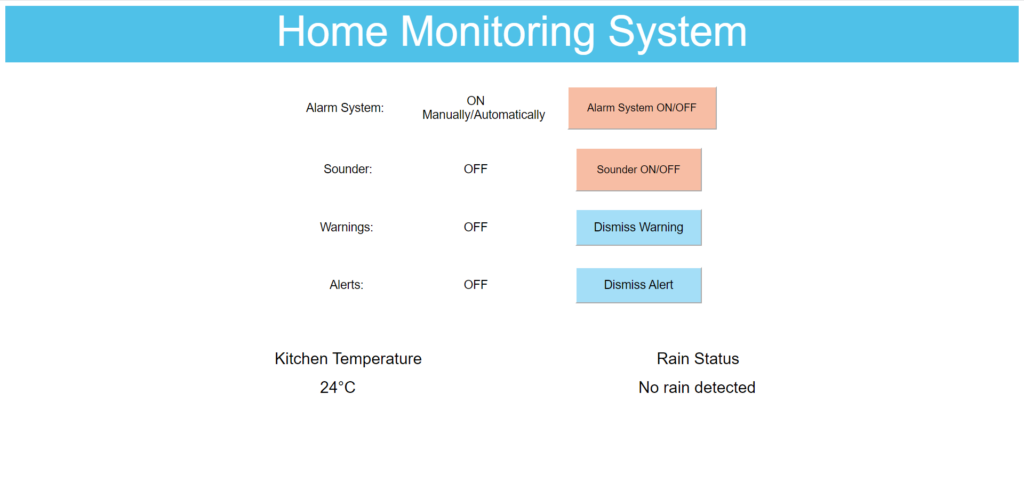A concern that many residents and homeowners share is the safety of their homes. The aim of this project is to design and implement a system that minimises any security vulnerabilities of a home by observing the state of the house and detecting any changes. This means that the whole process is done automatically without the need of a user controlling the system.
The proposed solution works by having a variety of sensors attached to specific parts of a home. These sensors include contact sensors, which are able to monitor any doors or windows and detect if they have been opened or closed, and motion sensors which detect movement, such as a person walking in front of the sensor.
Two contact sensors and two motion sensors are used. The front door has a contact sensor attached to it and a motion sensor observing that area. A window has the other contact sensor attached to it, and the other motion sensor is placed to observe another part of the home.
Any changes in the sensor values are detected by the microcontrollers which the sensors are attached to. These microcontrollers act as a microcomputer with software running on them that is designed to forward these values to a PC through Wi-Fi technology. The software on the PC gathers all the sensor data and checks whether a user’s smartphone is still connected to the home network to decide if the home is empty or not.
If a user’s smartphone is not connected and sensor data changes, the software decides that the home is empty and automatically switches on the alarm system. On the other hand, if the system is on and the software recognises the smartphone of the user on the home network, then it automatically shuts off parts of the alarm system.
If the system concludes that an intrusion was detected, an alarm goes off and the user is notified by a smartphone notification. This notification is sent by the webserver that is running on the PC. This webserver also displays sensor values, the state of the system, that is if the alarm system is on or off, and any warnings or intrusions detected.
The system also includes temperature and rain sensors that detect high temperatures and rain. If the temperature sensor registers a high reading, this reading is sent to the microcontroller which forwards it to the PC through Wi-Fi. This event is then displayed on the webserver as a warning and the user is notified. For the rain sensors, if rain is detected, the system checks that all the windows are closed and raises a warning on the web-server if any window was left open.
The system described was tested and achieved successful results, with the main drawback being that only one user was considered. A few features that could be added to the system include considering multiple users, improving the home security by adding components such as cameras to monitor intrusions, and focusing on increasing user comfort.

Student: Amy Gatt
Course: B.Sc. (Hons.) Computer Engineering
Supervisor: Prof. Victor Buttgieg
